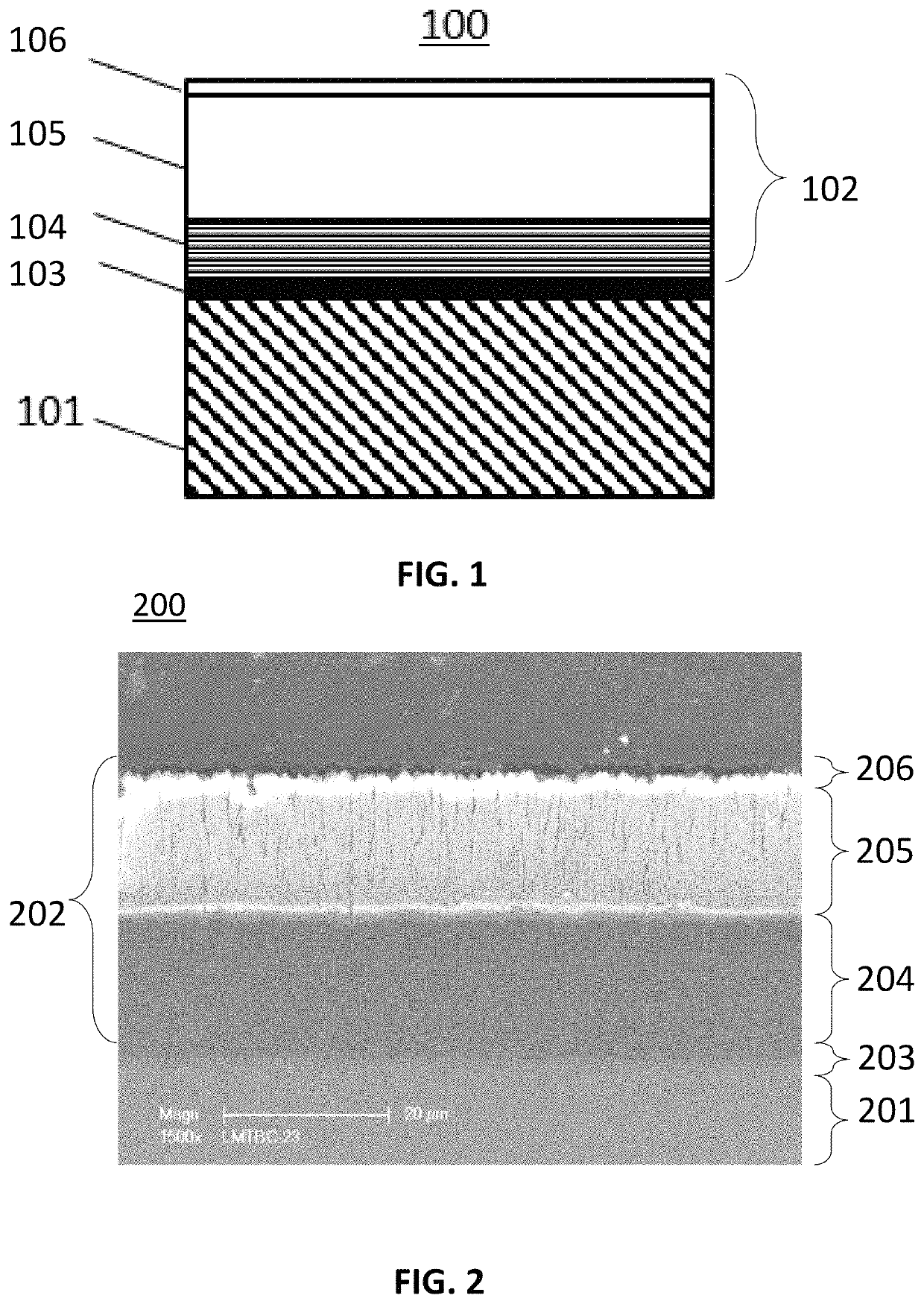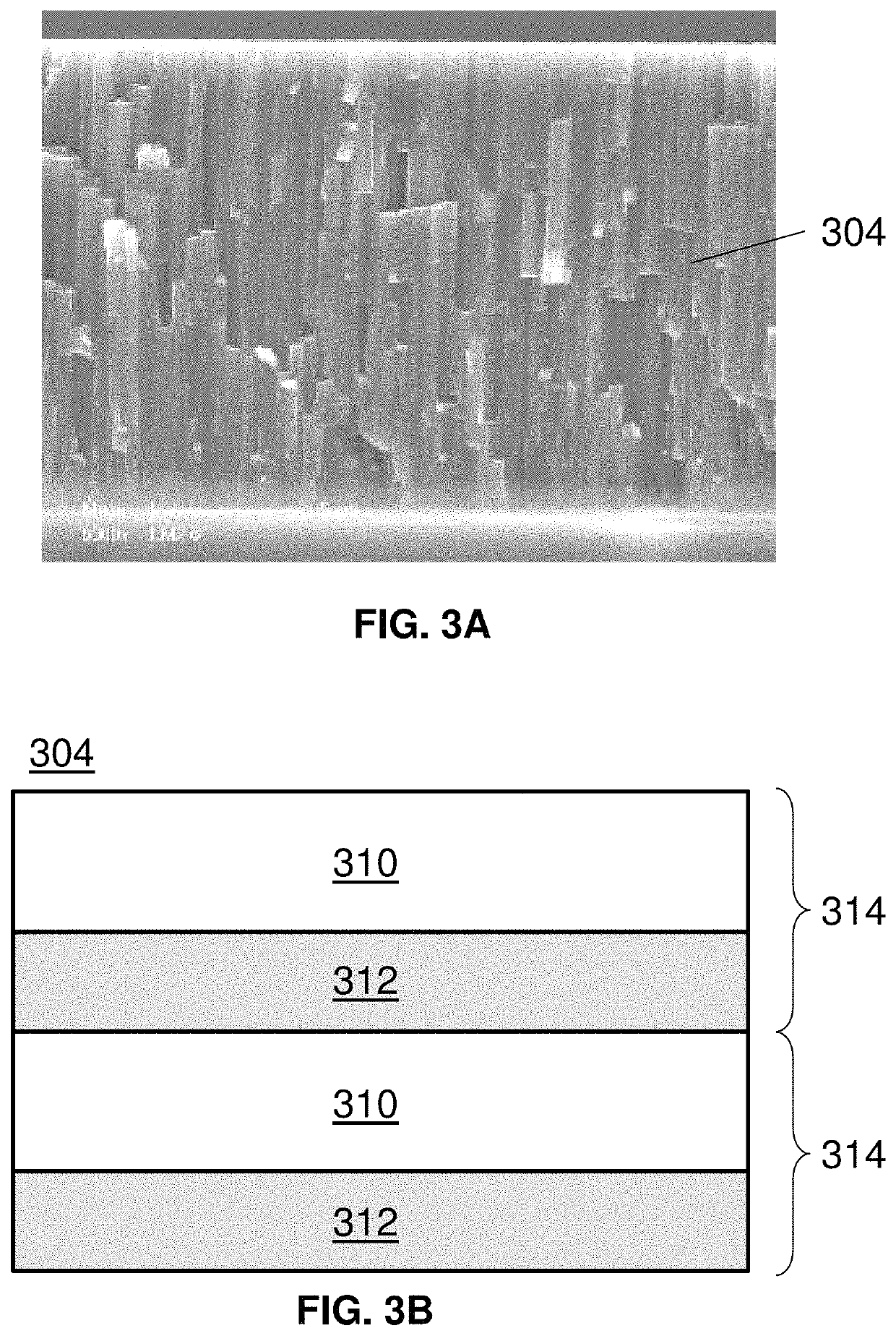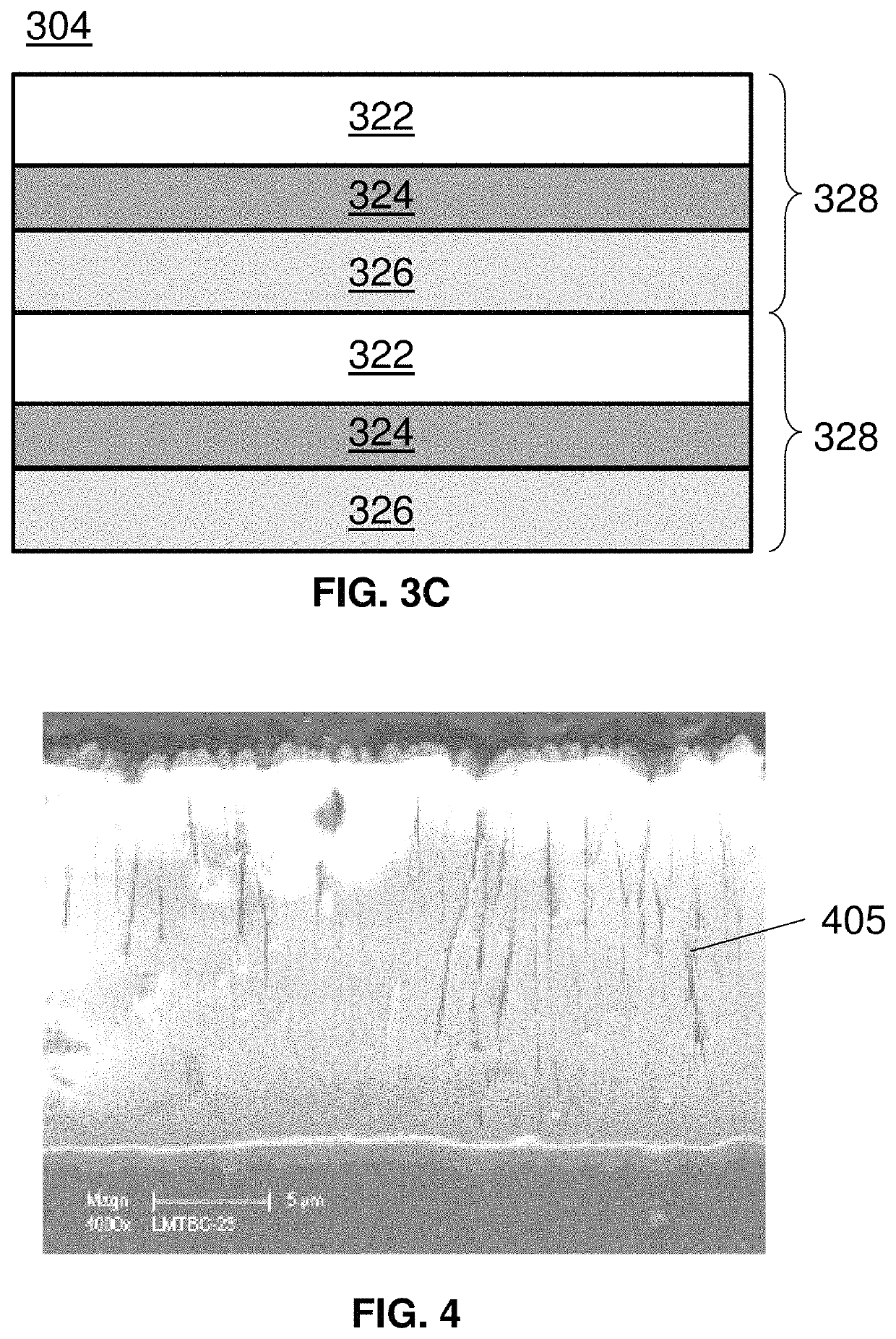Thermal protection system for lightweight hypersonic missile fin
a technology of thermal protection system and hypersonic missile, which is applied in the direction of cosmonautic thermal protection, vacuum evaporation coating, coating, etc., can solve the problems of titanium alloys generally unable to operate above 350-400° c, poor high-temperature oxidation resistance of titanium, and limited velocity and rang
- Summary
- Abstract
- Description
- Claims
- Application Information
AI Technical Summary
Benefits of technology
Problems solved by technology
Method used
Image
Examples
example 1
[0122]A purpose of this example is to demonstrate that a titanium alloy may have poor high-temperature oxidation resistance. Titanium alloys are typically not suitable for temperatures exceeding about 350 to 400 degrees Celsius. Here, a slab of Ti-6Al-4V was annealed in a furnace for 20 minutes at 800 degrees Celsius. Ti-6Al-4V is an alpha-beta titanium alloy, which is also sometimes called TC4 or Ti64. As with any alloy, the composition of Ti-6Al-4V may vary, but in general, Ti-6Al-4V comprises: from about 3.5 to about 4.5 wt. % vanadium (V); from about 5.5 to about 6.75 wt. % aluminum (Al); up to about 0.3 wt. % Iron (Fe); up to about 0.2 wt. % Oxygen (O); up to about 0.08 wt. % Carbon (C); up to about 0.05 wt. % Nitrogen (N); up to about 0.015 wt. % Hydrogen (H); up to about 0.005 wt. % Yittrium (Y); with the balance being titanium (Ti). FIG. 11A is an example according to various embodiments illustrating a slab of Ti-6Al-4V before furnace annealing for 20 minutes at 800 degrees ...
example 2
[0123]A purpose of this example is to demonstrate the oxidation resistance of a superlattice bond coat according to various embodiments. A slab of Ti-6Al-4V was coated with approximately 20 μm of TiN / AlN superlattice multilayer with bilayer thickness of approx. 8.5 nm using Plasma Enhanced Magnetron Sputtering (PEMS) with a 50:50 at. % Ti—Al target within a Ar+N2 gas mixture. The coated slab was annealed in air at 800 degrees Celsius for 20 minutes alongside an uncoated slab of Ti-6Al-4V.
[0124]FIG. 12A is an example according to various embodiments illustrating the uncoated slab of Ti-6Al-4V prior to annealing. FIG. 12B is an example according to various embodiments illustrating the uncoated slab of Ti-6Al-4V after annealing at 800 degrees Celsius for 20 minutes. The uncoated slab suffered oxidation damage as a result of the annealing.
[0125]FIG. 13A is an example according to various embodiments illustrating the slab of Ti-6Al-4V coated with a TiN / AlN multilayer before annealing. FI...
example 3
[0128]A purpose of this example is to demonstrate the impact that the thermal insulation provided by a TiN / AlN multilayer coating has on the morphology of a Ti-15Mo-3Nb-3Al-0.2Si alloy. As with any alloy, the composition of Ti-6Al-4V may vary, but in general, Ti-15Mo-3Nb-3Al-0.2Si comprises: from about 14 to about 16 wt. % Molybdenum (Mo); from about 2.4 to about 3.2 wt. % Niobium (Nb); from about 2.5 to about 3.5 wt. % Aluminum (Al); from about 0.15 to about 0.25 wt. % Silicon (Si); from about 0.11 to about 0.17 wt. % Oxygen (O); up to about 0.4 wt. % Iron (Fe); up to about 0.015 wt. % Hydrogen (H); up to about 0.05 wt. % Carbon (C); up to about 0.05 wt. % Nitrogen (N); with the balance being Titanium. A slab of Ti-15Mo-3Nb-3Al-0.2Si was coated with a TiAlN / AlN multilayer coating using Plasma Enhanced Magnetron Sputtering (PEMS) in an Ar+N2 gas mixture using a 50:50 at. % Ti—Al target and pure aluminum target. The TAlN / AlN layer then had an Yttria Stabilized Zirconia (YSZ) layer de...
PUM
| Property | Measurement | Unit |
|---|---|---|
| thickness | aaaaa | aaaaa |
| thickness | aaaaa | aaaaa |
| thickness | aaaaa | aaaaa |
Abstract
Description
Claims
Application Information
 Login to View More
Login to View More - R&D
- Intellectual Property
- Life Sciences
- Materials
- Tech Scout
- Unparalleled Data Quality
- Higher Quality Content
- 60% Fewer Hallucinations
Browse by: Latest US Patents, China's latest patents, Technical Efficacy Thesaurus, Application Domain, Technology Topic, Popular Technical Reports.
© 2025 PatSnap. All rights reserved.Legal|Privacy policy|Modern Slavery Act Transparency Statement|Sitemap|About US| Contact US: help@patsnap.com



